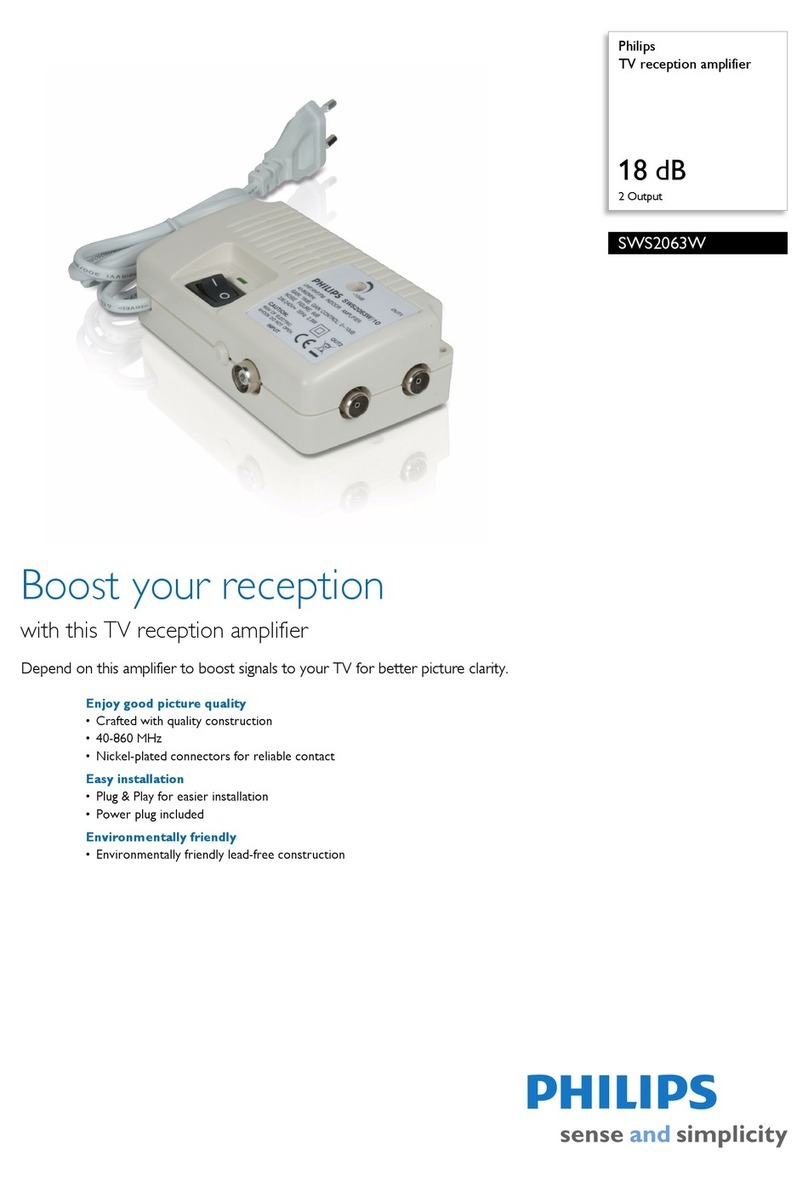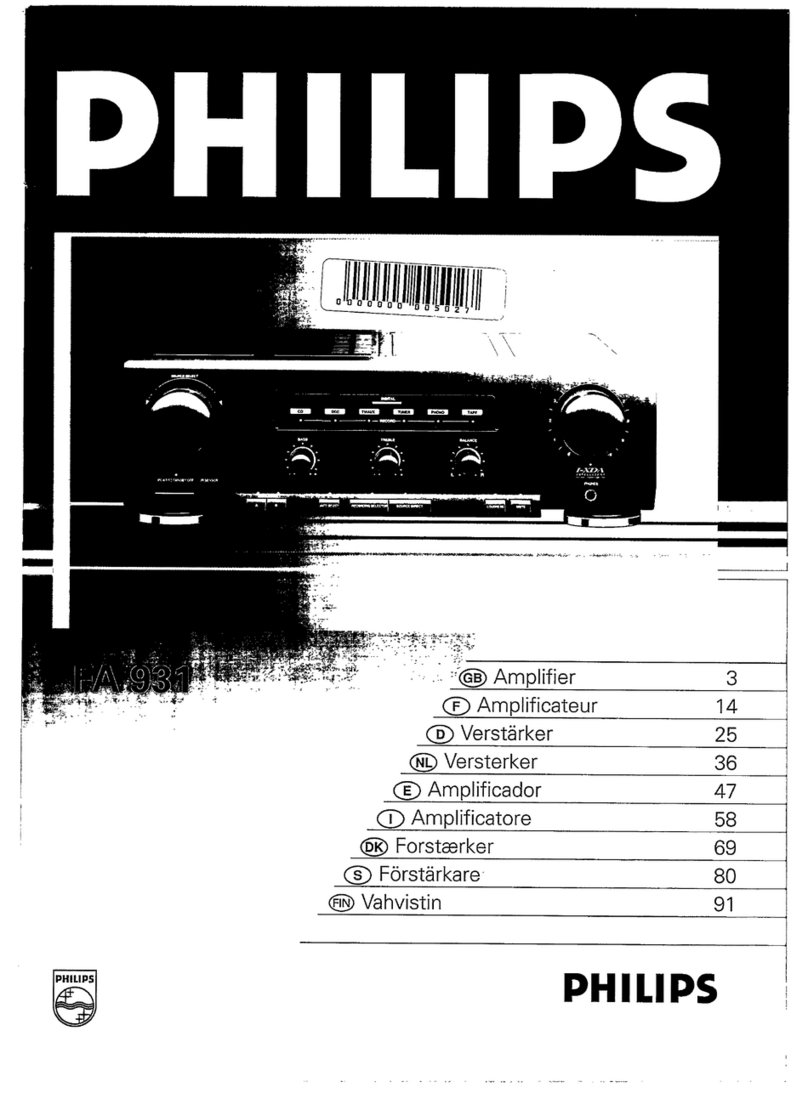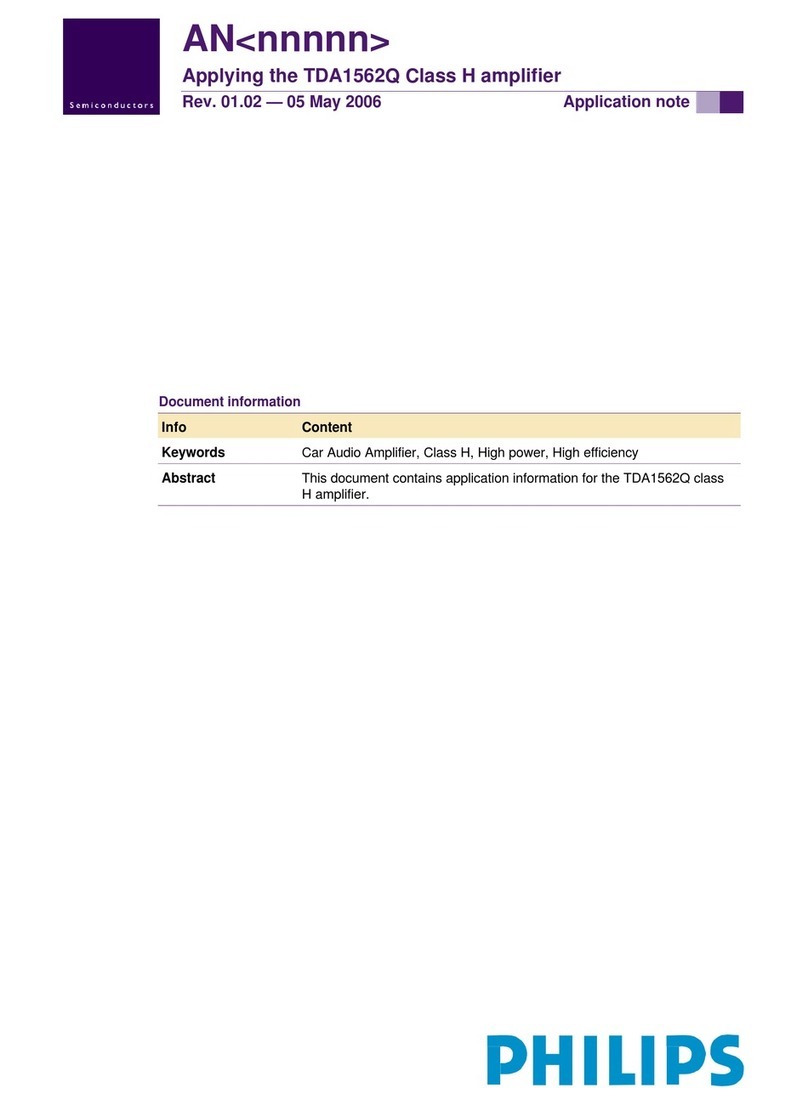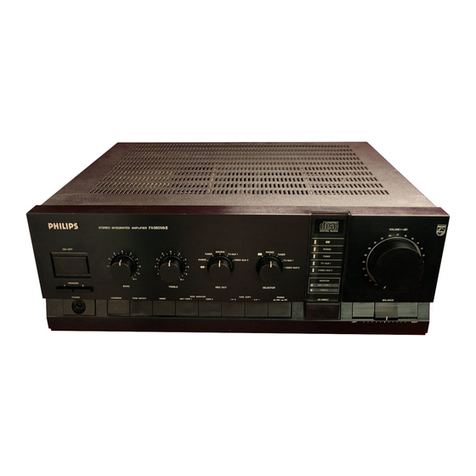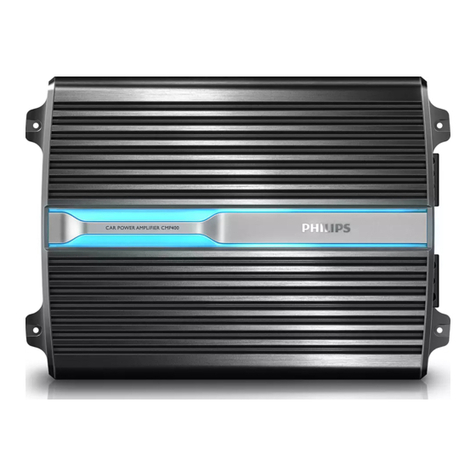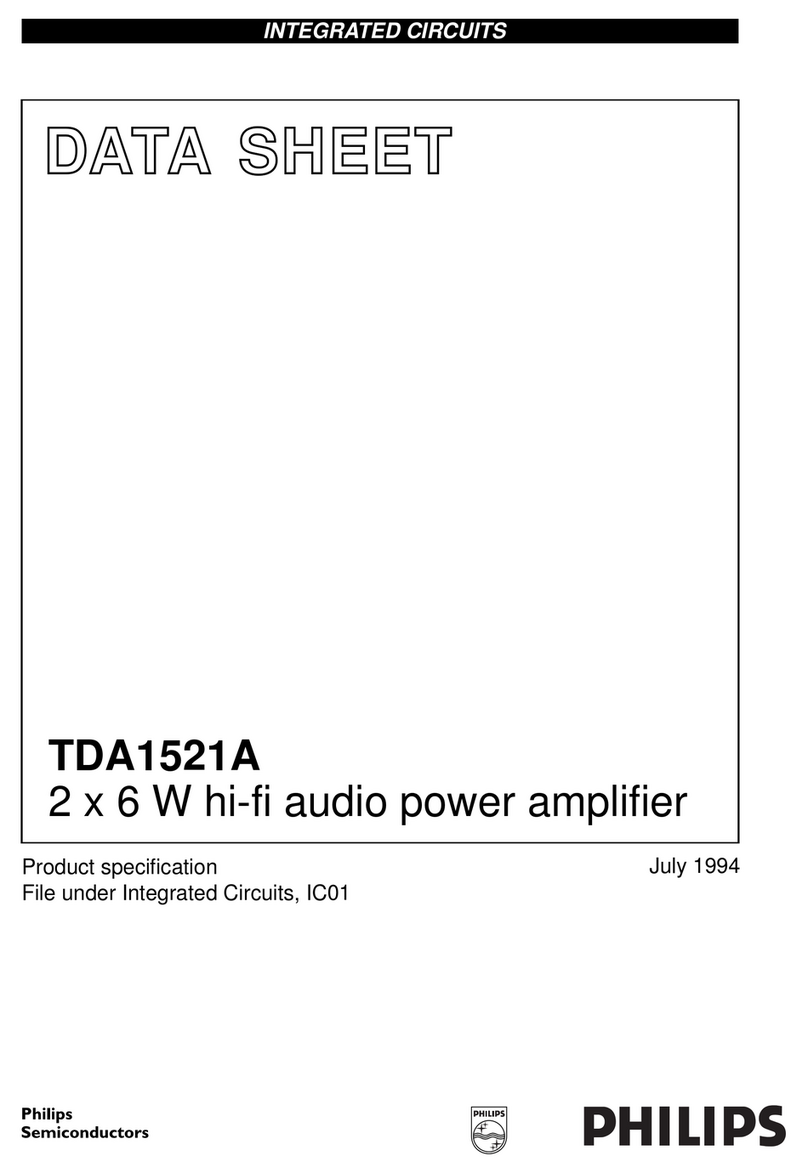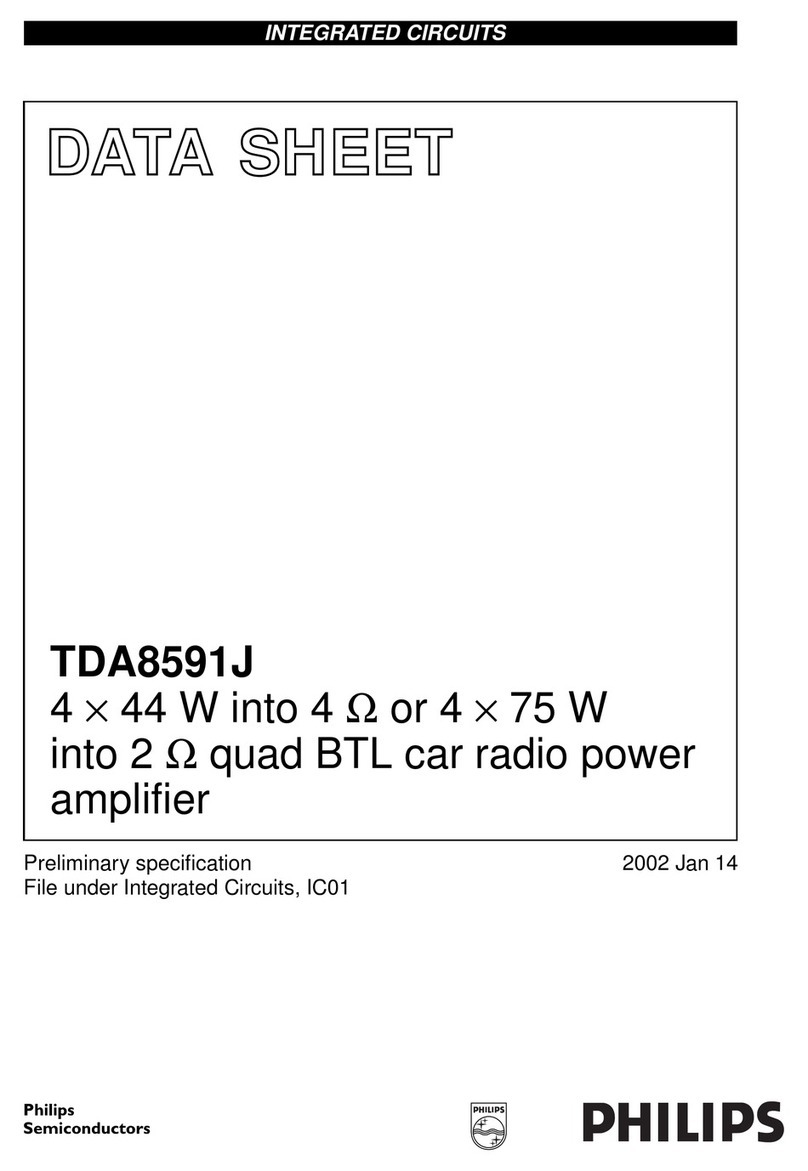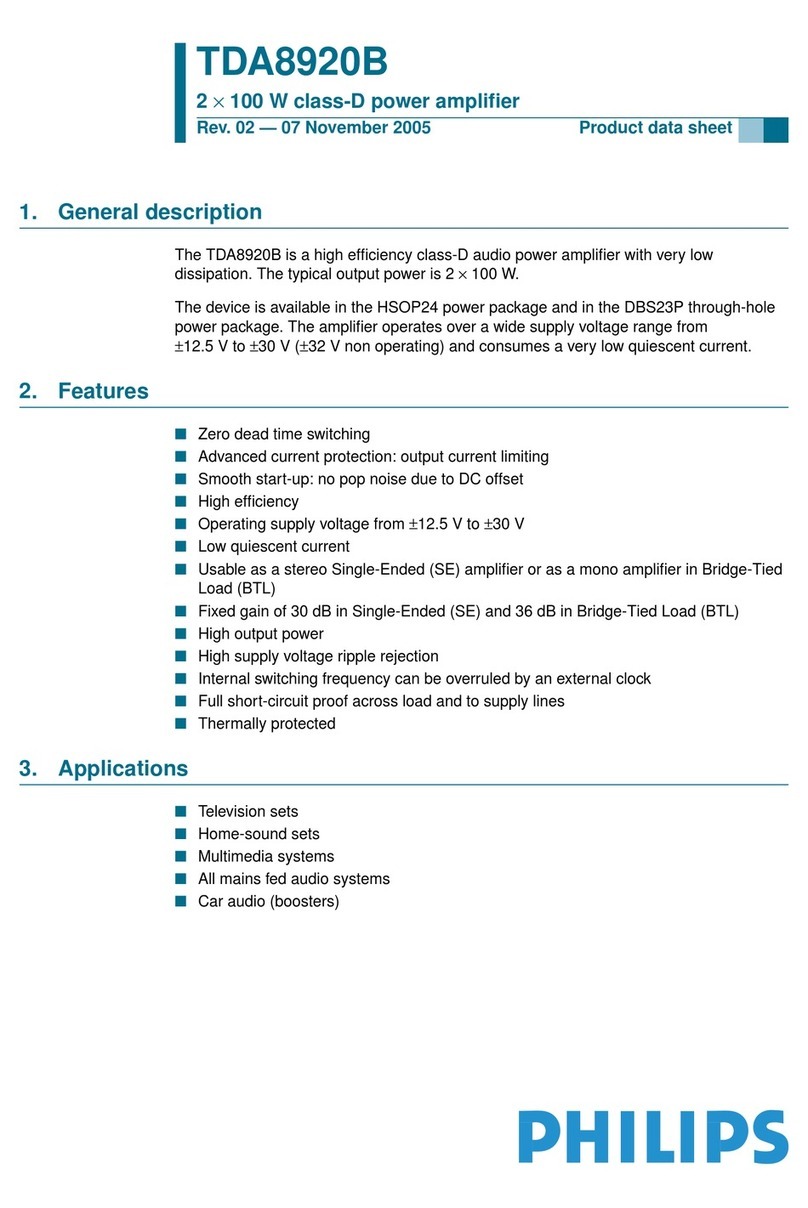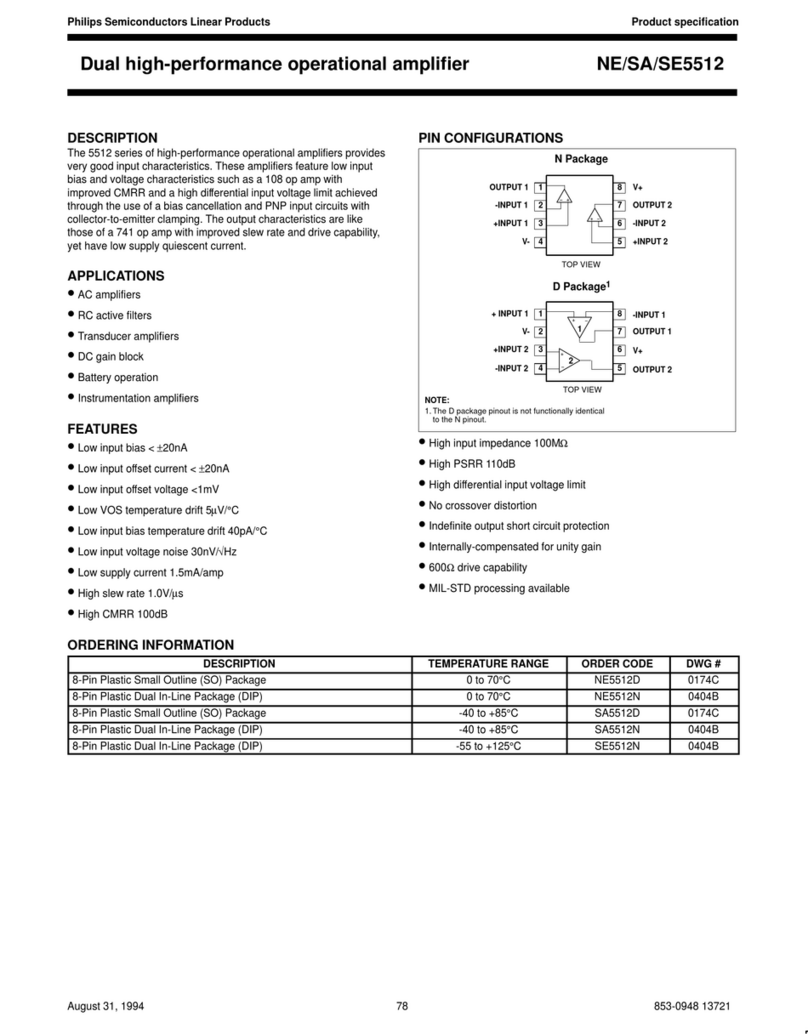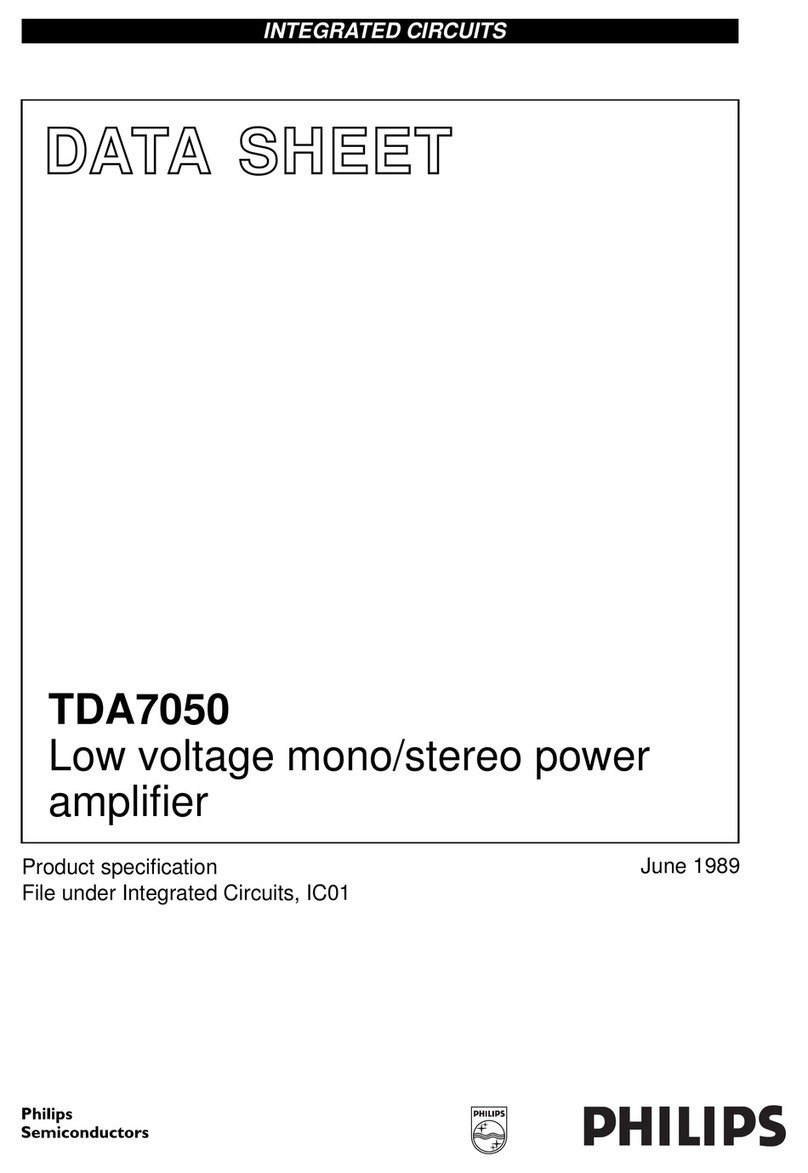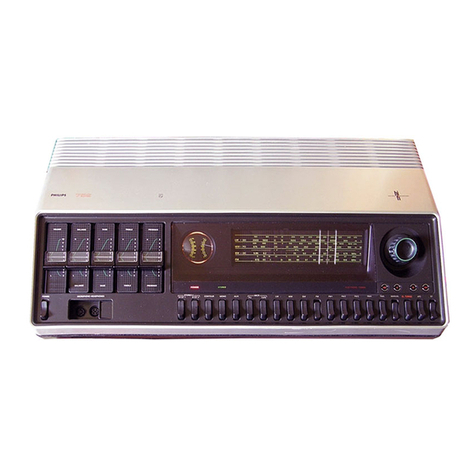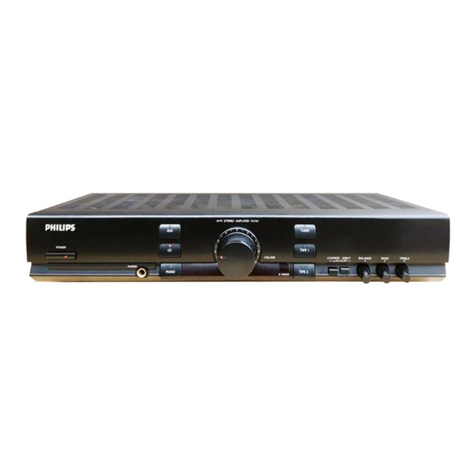
TDA8559_3 © Koninklijke Philips Electronics N.V. 2006. All rights reserved.
Product data sheets Rev. 03 — 15 May 2006 5 of 36
Philips Semiconductors TDA8559T
Low-voltage stereo headphone amplifier
8. Functional description
The TDA8559T contains two amplifiers with differential inputs, a 0.5VPoutput buffer and a
high supply voltage stabilizer. Each amplifier consists of a voltage-to-current converter
(V/I), an output amplifier and a common dynamic quiescent current controller. The gain of
each amplifier is internally fixed at 26 dB (= 20 ×). The 0.5VPoutput can be used as a
replacement for the single-ended capacitors. The two amplifiers can also be used as a
mono amplifier in a BTL configuration thereby resulting in more output power.
With three mode select pins, the device can be switched into the following modes:
1. Standby mode (IP<10µA)
2. Mute mode
3. Operation mode, with two input selections (the input source is directly connected or
connected via coupling capacitors at the input).
The ripple rejection in the stereo application with a single-ended capacitor can be
improved by connecting a capacitor between the 0.5VPcapacitor pin and ground.
The device is fully protected against short-circuiting of the output pins to ground, to the
low supply voltage pin and across the load.
8.1 V/I converters
The V/I converters have a transconductance of 400 µS. The inputs are completely
symmetrical and the two amplifiers can be used in opposite phase. The Mute mode
causes the V/I converters to block the input signal. The input mode pin selects two
applications in which the V/I converters can be used.
The first application (input mode pin floating) is used with a supply voltage below 6 V. The
input DC level is at ground level (the unused input pin connected to ground) and no input
coupling capacitors are necessary. The maximum converter output current is sufficient to
obtain an output swing of 3 V (peak).
In the second application with a supply voltage greater than 6 V (input mode pin HIGH),
the input mode pin is connected to VP. In this configuration (input DC level is
0.5VP+ 0.6 V) the input source must be coupled with a capacitor and the two unused
input pins must be connected via a capacitor to ground, to improve noise performance.
This application has a higher quiescent current, because the maximum output current of
the V/I converter is higher to obtain an output voltage swing of 9 V (peak).
8.2 Output amplifiers
The output amplifiers have a transresistance of 50 kΩ, a bandwidth of approximately
750 kHz and a maximum output current of 100 mA. The mid-tap output voltage equals the
voltage applied at the non-inverting pin of the output amplifier. This pin is connected to the
output of the 0.5VPbuffer. This reduces the distortion when the load is connected
between an output amplifier and the buffer (because feedback is applied over the load).
8.3 Buffer
The buffer delivers 0.5VPto the output with a maximum output (sink and source) current of
200 mA (peak).

